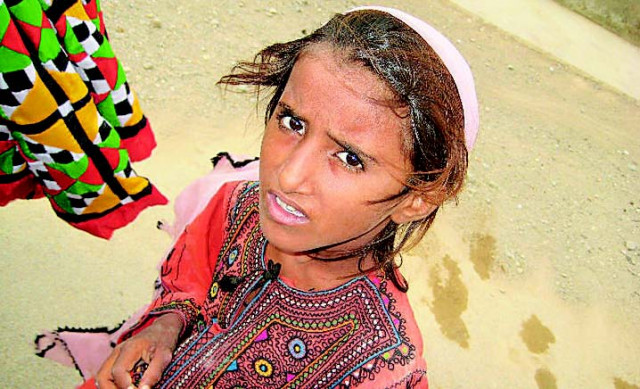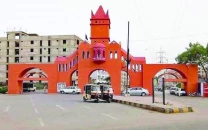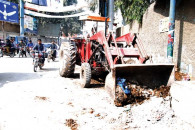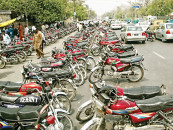Sindh remains in grip of emergency: UN
UN agencies say Sindh a main area of concern for them.

According to Maurizio Giuliano from United Nations Office for the Coordination of Human Affairs, “the second wave of deaths will soon come; we are entering the worst stage now.”
The World Health Organisation’s Gul Afridi said that they are expecting “2.2 million cases of malaria in the upcoming months which is alarming”. Ban al Dahi from UNICEF added that “a massive immunisation campaign which will be launched soon.”
Approximately 5.2 million people have been provided medical treatment since July 29, said Afridi. “A team of professionals from Bangladesh has arrived in Sindh and have been working since the past six days. A new diarrhoea centre has been setup in Sukkur.”
Another concern are the pregnant women. A total of 0.5 million women are pregnant out of whom 1,700 go into labour everyday. “Emergency medical facilities are being set up for the expecting women,” said Sara Raza Khan from United Nations Population Fund. Out of the 20 million affected, 4.4million are of reproductive age.
As well as general food distributions, under the expanded relief operation, the World Food Programme is putting in place a targeted supplementary feeding programme for infants and pregnant and breastfeeding women, as well as emergency school meals programmes.
Natasha Scripture from the WFP said that the organisation “has been streaming emergency humanitarian assistance into Pakistan since the beginning of August and has so far received $103 million towards the $600 million budget required to fund the relief operation through to July 2011.”
WFP aims to provide emergency food assistance to an average of six million people each month till the end of January 2011 while transitioning towards early recovery activities. These include food-for-work and cash-for-work programmes to restore livelihoods and rehabilitate damaged land, irrigation systems and agricultural infrastructure. A significant part of the WFP’s work in helping small farmers will be implemented in collaboration with the Food and Agriculture Organisation.
“Of the one million homes damaged or destroyed, about 40,000 or four per cent have been reached [and provided with tents and plastic sheets],” said Chris Lom from Shelter Cluster.
A total of 79.9 per cent of the initial appeal has materialised, including the pledges, and UN representatives expressed hope that donors will respond better this time around. “It’s a bleak scenario. But the international community is becoming more engaged; more aid is coming in and is being distributed,” added Lom.
Published in The Express Tribune, September 18th, 2010.



















COMMENTS
Comments are moderated and generally will be posted if they are on-topic and not abusive.
For more information, please see our Comments FAQ